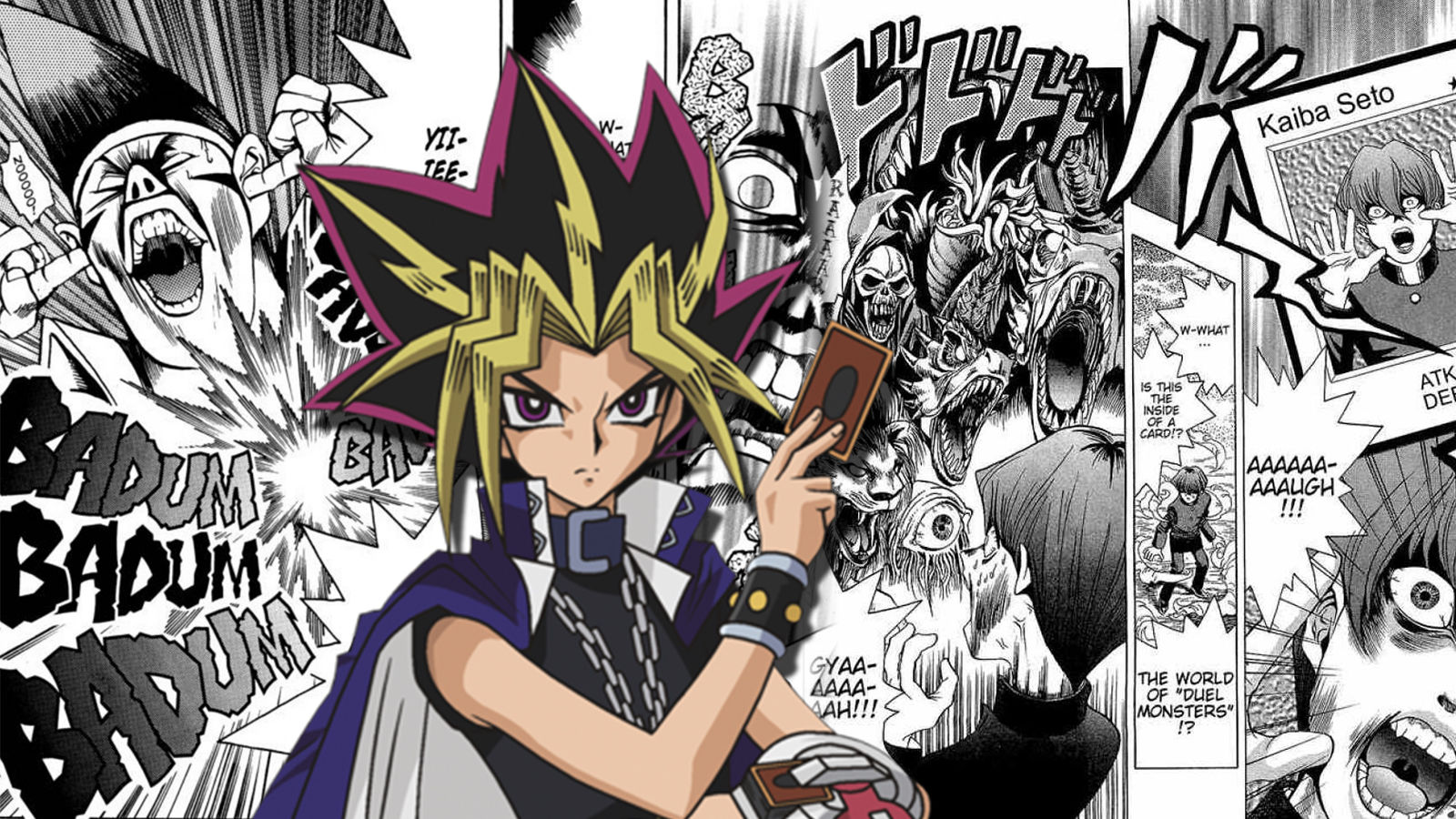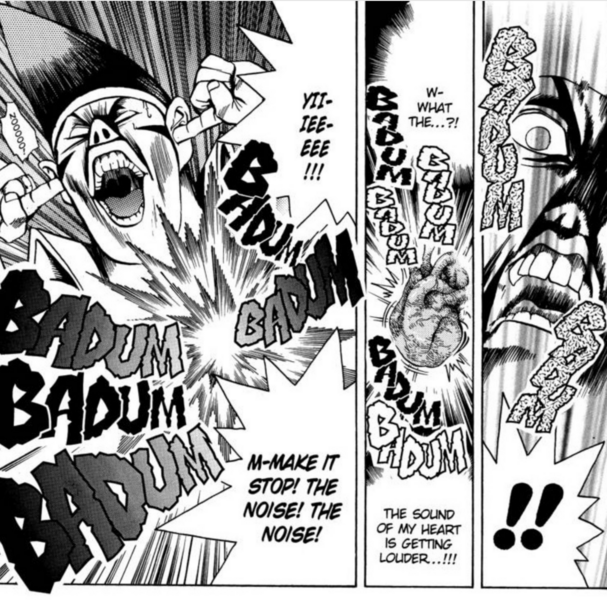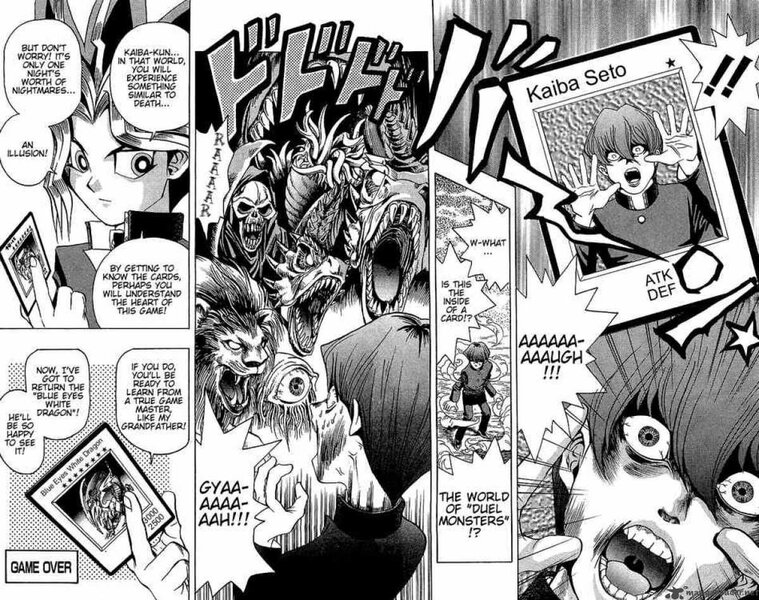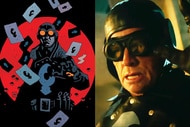Create a free profile to get unlimited access to exclusive videos, sweepstakes, and more!
Remembering the most screwed-up, WTF moments of the original Yu-Gi-Oh! manga

Perhaps you are familiar with Yu-Gi-Oh!. Perhaps you are familiar with it because you watched the anime (celebrating its 20th birthday this week), which depicted a world revolving around cursed puzzles, ancient pharaohs, and a battling card game that brought demons, dragons, and warriors alike to life via hologram systems. Or perhaps you are familiar with it because you were (or remain) one of the millions upon millions of people who play the card game — which has had greater longevity than any other facet of the multimedia franchise — in real life.
What you may or may not know is that the world of Yu-Gi-Oh is derived from an absolutely buckwild manga by creator Kazuki Takahashi. It ran in Weekly Shonen Jump from 1996 to 2004 and remains one of the more popular shonen manga of all time. While the bulk of the manga revolves around the card game antics adapted by the anime, there’s a significant run of the story that doesn’t involve it at all. In fact, the card game, known as “Duel Masters,” doesn’t even show up until Chapter 60). These earlier chapters instead focus on how protagonist Yugi Mutou first encounters the Millennium Puzzle, an ancient cursed game possessed by the spirit of a pharaoh who serves as the Judge of Evil (it’s a whole thing — we’ll get to it).
Those who have read the manga likely know where this is going, but the big secret of Yu-Gi-Oh is that its source material has its roots in horror manga. While it became a more traditional shonen manga through development, Kazuki initially conceived it as a horror manga and those elements are extremely present in the end product. The early volumes of the manga contain stories, plot beats, and visuals that no 11-year-old has any business being subjected to — which, of course, makes it all the radder to them when they inevitably encounter it anyway.
In commemoration of the series celebrating such a significant anniversary this week, here are some of the biggest, boldest, WTF moments the original Yu-Gi-Oh manga had to offer.
GRANDPA SAID WHAT?!
In the series’ opening chapter, we meet Yugi, a meek, nerdy kid obsessed with puzzles and games. Years ago, he was given a mysterious, nigh-unsolvable puzzle called the Millennium Puzzle by his quirky old granddad — and he’s been trying to solve it for eight years. Grandpa Mutou has told Yugi that the person who solves the puzzle is granted one wish. Yugi’s wish? For one friend. This poor kid just wants a friend! One! He seems nice enough, I say give Yugi a friend.
Then he goes and solves it and we learn the truth — from Grandpa Mutou of all people. Here’s the direct quote, via his weirdly nonchalant internal monologue: “The one who completes that puzzle will inherit the Shadow Games and will dispense justice to all, and judge evil. Those are the words in the ancient Book of the Dead.”
... OK. Hold up.
This grandfather gave a CHILD a cursed puzzle that will turn him into the mythic JUDGE OF ALL EVIL? The master of the SHADOW GAMES? And he gave it to him under the guise of the puzzle granting this kid a wish?!
Yugi’s granddad serves as his legal guardian! Somebody, please, call social services.
ROUGH JUSTICE
Most of the first 60 chapters of Yu-Gi-Oh revolve around Yugi encountering a bully, creep, or general miscreant, said miscreant beating up Yugi or one of Yugi’s friends, and then the spirit of Yu-Gi-Oh possessing Yugi and subjecting the bully to a sadistic Shadow Game as justice. Shadow Games tend to be simple tests of strength, skill, or stamina with elevated stakes and almost always end in the bully on the other end getting maimed (by fire, knives, the list goes on) or driven to insanity. You know, super chill kid stuff.
You could flip to a random chapter of the manga and find a Shadow Game worthy of being on this list, but the one Dark Yugi creates in Chapter 3 is pretty hard to top. The Bully of the Week this time is Sozoji, a wannabe rock star who bullies kids at school into coming to all-night karaoke sessions under the threat of physical violence (it bears repeating that this comic is insane). When he crosses Yugi, he finds himself challenged to a Shadow Game with particularly brutal consequences.
The game is simple: Dark Yugi and Sozoji sit in silence. The first one to make enough noise to trigger a noise-sensitive toy sitting in front of them loses. In a twist pretty directly homaging Edgar Allen Poe’s "The Tell-Tale Heart," the adrenaline gets Sozoji so jacked up that his microphone picks up the sound of his heart beating, triggering the toy and dooming him. His punishment? The sound of his heart beating thuds louder and louder in his ears endlessly, eventually driving him insane.
It cannot be stressed enough that this manga was marketed to children.
KAIBA GETS GOT
Every shonen story needs its Vegeta, a moody antihero who starts out at odds with the protagonist only to eventually develop a sometimes-reluctant friendship with them. For Yugi, that character is Seto Kaiba. In the anime, Kaiba is a pretentious millionaire and an elite Duel Masters player who wields the most famous card in the franchise: the Blue Eyes White Dragon. While his origins in the anime are relatively traditional for a shonen antihero, his first appearance in the manga is (perhaps predictably at this point) absolutely bonkers.
The story does, appropriately, revolve around the Blue Eyes White Dragon card, which Kaiba steals from Yugi and his grandfather. Dark Yugi challenges Kaiba to a Shadow Game as recompense and, shocker, Kaiba loses. His punishment sees his soul trapped in a Duel Monsters card and mauled by creatures from the game. It only lasts for a night but Dark Yugi calls the experience, “Something similar to death.”
Kaiba stans need not worry, though. Eventually, he recovers and, a few chapters later, builds a theme park full of literal death traps to get revenge on Yugi and his friends — who are, it bears repeating, high school students who aren’t even old enough to drive yet.
While the darker elements of the manga take a backseat as the focus shifts from Shadow Games to Duel Monsters, the series never fully abandoned its horror roots. Later stories include series villain Pegasus forcing Bandit Keith to kill himself by turning his hand into a gun and, down the line, Pegasus meeting his own bloody end by getting his Millennium Eye ripped out of his skull. Throughout the run there are haunted houses, a suicide via jumping out of the window of a skyscraper, and a bank robber who’s tricked into self-immolating by Dark Yugi.
The anime, perhaps understandably, largely toned down these elements as the franchise grew in popularity and soon it matched the tone of similar shows of the era like Pokémon, Beyblade, and Medabots. But the original manga remains in print in all its uncensored glory, to this day being marketed to literal children despite being as deranged as the most graphic of Game of Thrones moments.



























